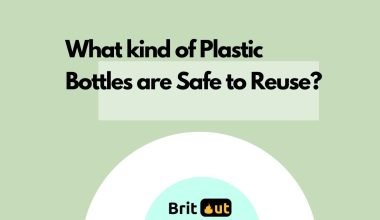The question of whether meat-absorbent pads are poisonous has become a growing concern among consumers lately, particularly those who are health-conscious and seeking to minimize their exposure to harmful substances.
In this guide, we’ll cover in detail whether or not these pads are safe for you.
So let’s get to it.
How Meat Absorbent Pads Work
Essentially, Meat Absorbent pads are small pads that are placed in the bottom of meat packaging to soak up any excess moisture that might be present.

This can help keep the meat fresher for longer, as excess moisture can lead to spoilage.
So, what are these pads made up of? Well, it depends on the manufacturer.
Some pads are made from materials like cellulose, which is a type of plant fiber.
Others are made from synthetic materials like polyester or polypropylene.
Some pads are even made from a combination of materials.
Regardless of what they’re made of, the basic idea is the same.
The pads are designed to absorb and hold onto any excess moisture, which can help prevent the growth of bacteria and other harmful organisms.
In some cases, the pads may also contain other substances, like antimicrobial agents, to help further reduce the risk of contamination.
It’s important to note that not all meat products use absorbent pads.
Some types of meat, like whole chicken or beef roasts, may not require them.
However, they are commonly used in products like ground beef or poultry, which tend to produce more excess moisture.
While meat-absorbent pads may seem like a simple and harmless solution, there are some concerns about their potential risks to human health.
Are Meat Absorbent Pads Poisonous?
First of all, there is no evidence to suggest that meat-absorbent pads are inherently toxic or dangerous.
In fact, the materials used to make them are generally considered safe for use in food packaging.
That being said, there are definitely some risks associated with them.
One is the fact that they may contain harmful substances like heavy metals or chemicals that could leach into the meat.
This is particularly concerning if the meat is cooked or consumed directly on the pad.
However, studies on this have mixed results.
Some studies have found evidence of harmful substances in the pads, while others have found no such evidence.
Additionally, the amount of these substances found in the pads is generally quite small, and it’s unclear whether they pose any significant risk to human health.
Another concern is that the use of absorbent pads could lead to the growth of harmful bacteria or other microorganisms.
If the pads are not changed or disposed of properly, they could potentially become a breeding ground for bacteria, which could then contaminate the meat.
Again, the research on this topic is somewhat mixed. While some studies have suggested that the use of absorbent pads can increase the risk of bacterial growth, others have found no significant difference in the risk of contamination between meat that is packaged with pads and meat that is not.
What Happens When You Accidentally Ingest Meat-Absorbent Pads?
Most meat absorbent pads are made from materials like cellulose or synthetic fibres, which are generally considered safe for human consumption in small amounts.

However, it’s always better to err on the side of caution and take a few steps to minimize any potential risks.
Just like cooking them, consuming them is not safe as well.
If you’ve ingested a meat absorbent pad, the first thing you should do is drink plenty of water.
This can help flush the pad through your digestive system and prevent any potential blockages.
You can also try eating some high-fiber foods, like fruits or vegetables, which can help move things along.
It’s also a good idea to monitor your symptoms. While it’s unlikely that you’ll experience any serious problems, you may notice some minor digestive issues, like stomach pain or diarrhea.
If your symptoms persist or worsen, you should seek medical attention.
In most cases, however, you should be able to pass the pad without any issues.
If you do see the pad in your stool, don’t be alarmed.
This is a normal part of the digestive process and doesn’t necessarily mean that there is anything wrong.
Of course, the best way to avoid accidentally cooking or ingesting a meat absorbent pad is to take steps to prevent it from happening in the first place.
Always be careful when handling meat products and try to avoid cutting or tearing the packaging.
If you do notice a piece of the pad inside the meat, simply remove it before cooking or consuming.
Conclusion
While the use of meat-absorbent pads in packaging may seem concerning, there is no evidence to suggest that they are inherently dangerous or toxic.






